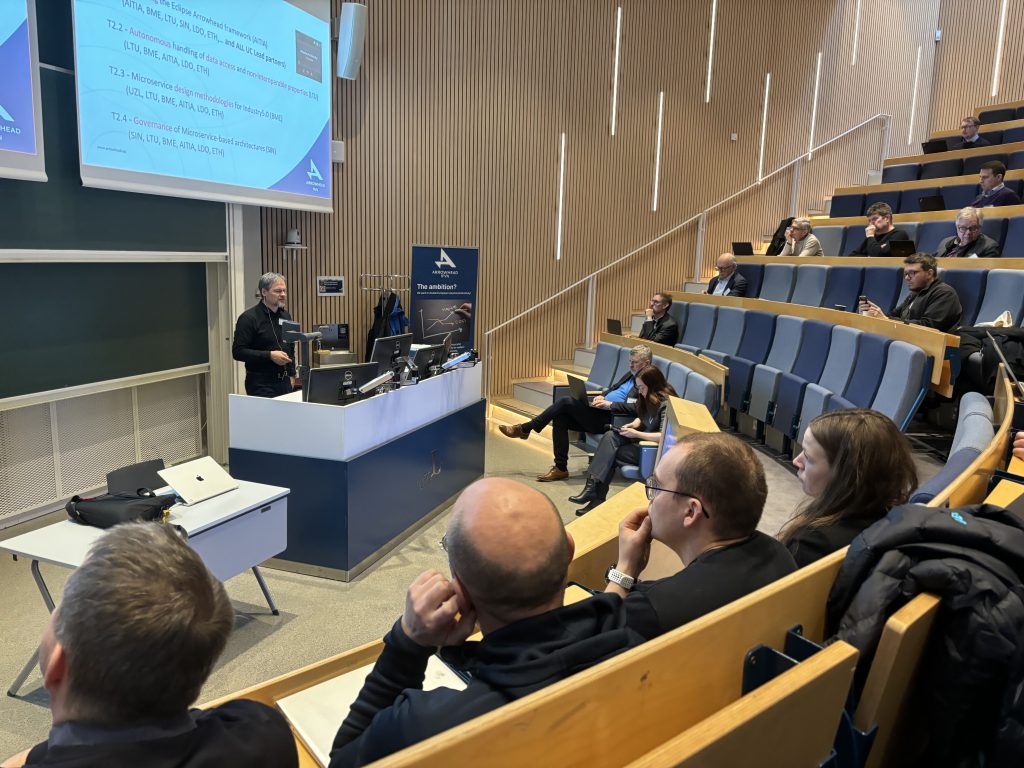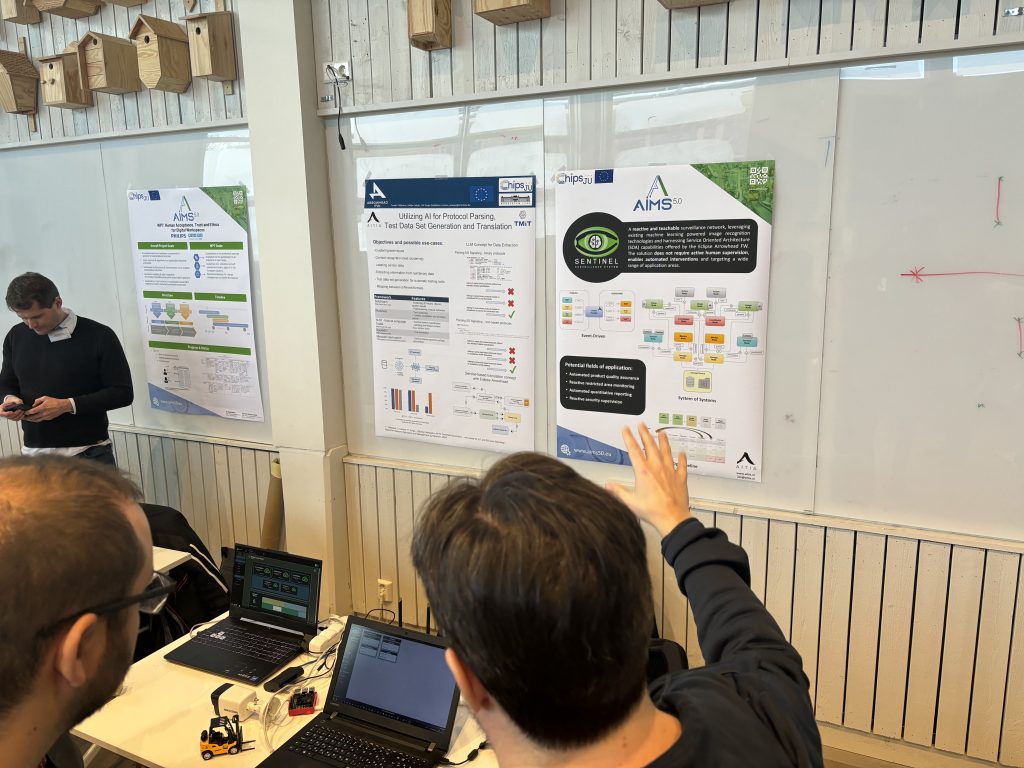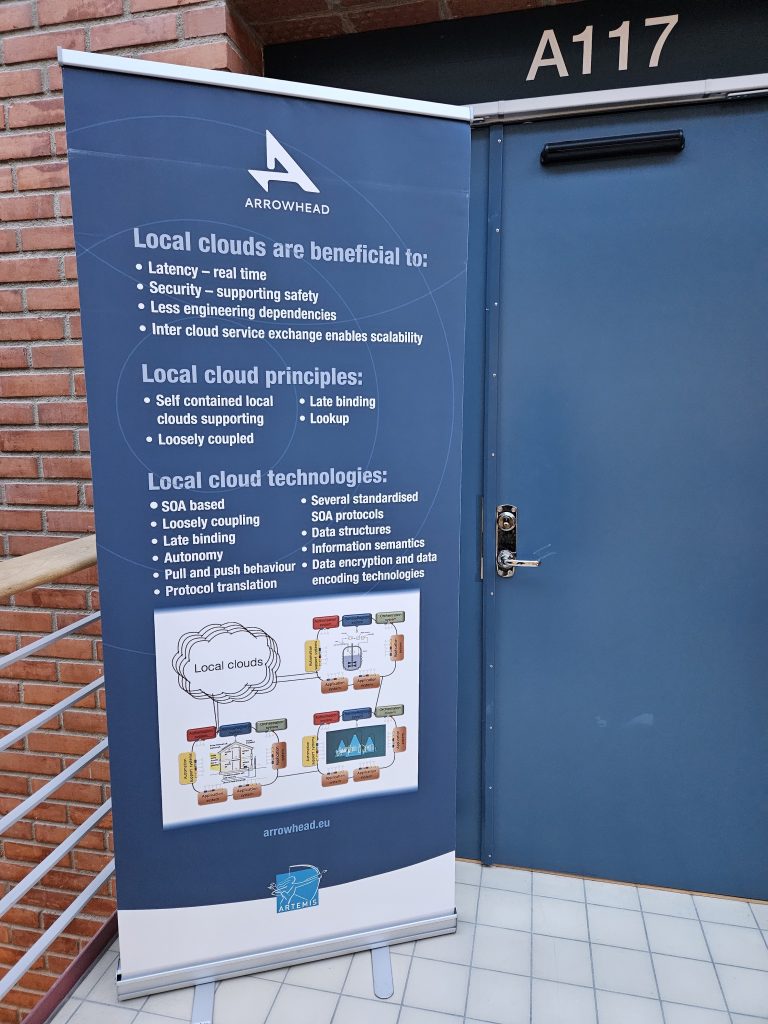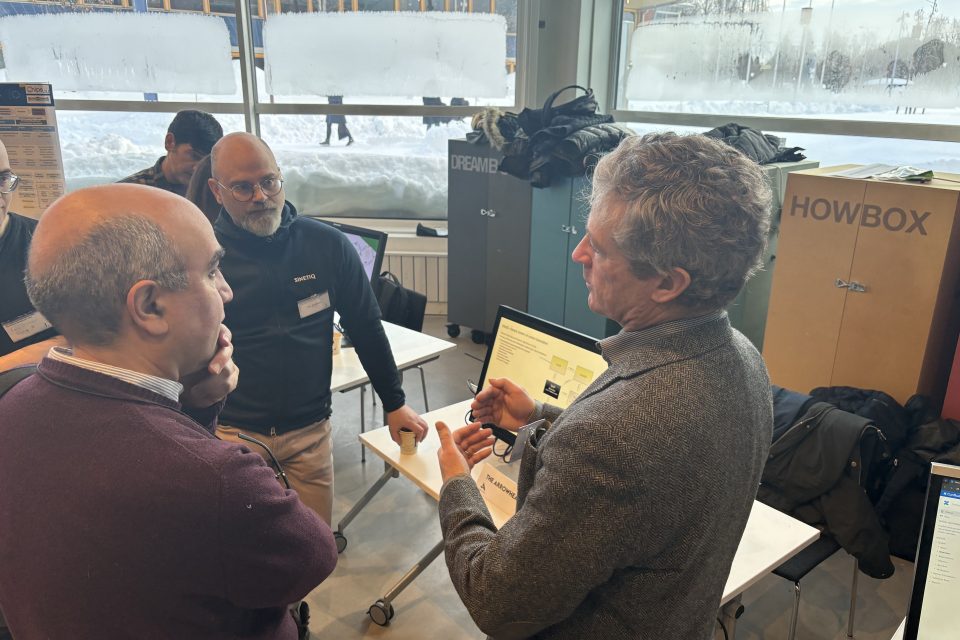As part of the Arrowhead fPVN project and in collaboration with the AIMS 5.0 project, Sinetiq contributed to a workshop hosted by the Luleå University of Technology in Sweden between 23-25 January. In this workshop, discussions on digital technologies, cyber-architecture ideas, and AI approaches took place with the objective of driving innovation and transforming the European industrial production landscape.
Taking advantage of the local status, the full Sinetiq team participated in the discussions alongside more than 50 representatives from the academy and industrial EU partners. The main focus of this meeting was technology dissemination and demonstrations, which are of great interest to partners such as Sinetiq, who have already brought these technologies to the external industrial landscape.

A summary of the workshop days
The workshop began with an introduction in a plenary session by Jerker Delsing. This introduction was focused on the preparations for the upcoming project review, detailing deliverables, roadmap and timelines. This session was followed by a presentation on how to capture use-case requirements to be used within the project. Special emphasis was put on why clearly defined requirements, with measurable indicators, can help highlight the contributions and importance of the technologies developed within the project, helping with dissemination. This presentation connected smoothly to the next point of the agenda, the next steps on workshops and technology dissemination events. This took place, of course, after a well-earned fika time.
In the following discussion, multiple references to industrial partners, such as Sinetiq, were made relating to how we already sell the technologies being developed, showing them that they are valuable for real-world industrial scenarios. Within this discussion, the project leads exhorted use-case owners to move from requirement sources to adopters of the project technologies, e.g., Arrowhead Framework, not only to generate more requirement input, but also to disseminate the functionalities and perks of this type of technology.

The plan for the rest of the day originally was to separate the participants into their relevant work packages (WP), but by popular demand and to take advantage of everyone being together, a joint session took place to discuss common topics. The focus of this new joint session was on the core framework technologies, such as the Arrowhead Core systems, in which Sinetiq has a special interest. This discussion concluded with the need for more collaboration and communication between WPs to feed requirements from one another and, in the end, reach the desired goal. Further WP-specific discussions took place afterward, presenting AI technologies, such as AI chat agents, to help with the design and implementation of Service-Oriented Architecture solutions.
On the next day, demos from a number of partners were presented, including a Sinetiq demo of the Arrowhead Roadmap, showing the core functionalities of the Arrowhead framework and what is the aim for the future. From these demos, Sinetiq recieved inspiration for the creation of training, teaching, and sales material.
The workshop included social events, with a special interest in exploring the arctic region of Luleå, walking in the Ice Road, and looking for northern lights.

About Arrowhead fVPN
The Arrowhead fPVN project consists of 43 partners from 13 countries. Partnering companies are, to mention a few, Stora Enso, Northvolt, AFRY, Leonardo, and Siemens. The 3-year project is funded by the European Union body Chips JU, Sweden’s Innovation Agency, other participating countries, and partners. It has a total budget of 350 million SEK, is led by Luleå University of Technology, and aims to create interoperability between independent systems in manufacturing industries’ IT environment. When fully implemented, the long-term goal is to double European industrial productivity.
Views and opinions expressed are, however, those of the author(s) only and do not necessarily reflect those of the European Union or Chips JU or Sweden’s Innovation Agency. Neither the European Union nor the granting authorities can be held responsible for them.
